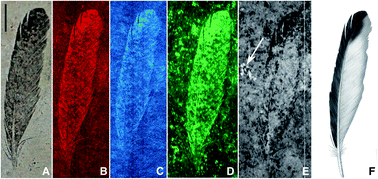During the months April – June 2016, the most downloaded JAAS articles were:
Determination of stability constants of strong metal–ligand complexes using anion or cation exchange chromatography and atomic spectrometry detection
M. Wacker and A. Seubert
J. Anal. At. Spectrom., 2014,29, 707-714
DOI: 10.1039/C3JA50358E
Atomic spectrometry update – a review of advances in environmental analysis
Owen T. Butler, Warren R. L. Cairns, Jennifer M. Cook and Christine M. Davidson
J. Anal. At. Spectrom., 2016,31, 35-89
DOI: 10.1039/C5JA90061A
The potential for a carbon stable isotope biomarker of dietary sugar intake
A. Hope Jahren, Joshua N. Bostic and Brenda M. Davy
J. Anal. At. Spectrom., 2016,31, 197-202
DOI: 10.1039/C5JA00293A
Elemental bio-imaging using laser ablation-triple quadrupole-ICP-MS
David P. Bishop, David Clases, Fred Fryer, Elizabeth Williams, Simon Wilkins, Dominic J. Hare, Nerida Cole, Uwe Karst and Philip A. Doble
J. Anal. At. Spectrom., 2016,31, 197-202
DOI: 10.1039/C5JA00293A
Femtosecond laser-induced breakdown spectroscopy
Timur A. Labutin, Vasily N. Lednev, Alexey A. Ilyin and Andrey M. Popov
J. Anal. At. Spectrom., 2016,31, 90-118
DOI: 10.1039/C5JA00301F
Synchrotron-based chemical imaging reveals plumage patterns in a 150 million year old early bird
Phillip. L. Manning, Nicholas P. Edwards, Roy A. Wogelius, Uwe Bergmann, Holly E. Barden, Peter L. Larson, Daniela Schwarz-Wings, Victoria M. Egerton, Dimosthenis Sokaras, Roberto A. Mori and William I. Sellers
J. Anal. At. Spectrom., 2013,28, 1024-1030
DOI: 10.1039/C3JA50077B
Atomic spectrometry update. Review of advances in the analysis of metals, chemicals and functional materials
Simon Carter, Andy Fisher, Raquel Garcia, Bridget Gibson, Steve Lancaster, John Marshall and Ian Whiteside
J. Anal. At. Spectrom., 2015,30, 2249-2294
DOI: 10.1039/C5JA90045J
Silver nanoparticle characterization using single particle ICP-MS (SP-ICP-MS) and asymmetrical flow field flow fractionation ICP-MS (AF4-ICP-MS)
Denise M. Mitrano, Angela Barber, Anthony Bednar, Paul Westerhoff, Christopher P. Higgins and James F. Ranville
J. Anal. At. Spectrom., 2012,27, 1131-1142
DOI: 10.1039/C2JA30021D
2015 Atomic Spectrometry Update – a review of advances in X-ray fluorescence spectrometry and their applications
Margaret West, Andrew T. Ellis, Philip J. Potts, Christina Streli, Christine Vanhoof and Peter Wobrauschek
J. Anal. At. Spectrom., 2015,30, 1839-1889
DOI: 10.1039/C5JA90033F
Detection, quantification and derivation of number size distribution of silver nanoparticles in antimicrobial consumer products
Claudia Cascio, Otmar Geiss, Fabio Franchini, Isaac Ojea-Jimenez, François Rossi, Douglas Gilliland and Luigi Calzolai
J. Anal. At. Spectrom., 2015,30, 1255-1265
DOI: 10.1039/C4JA00410H













